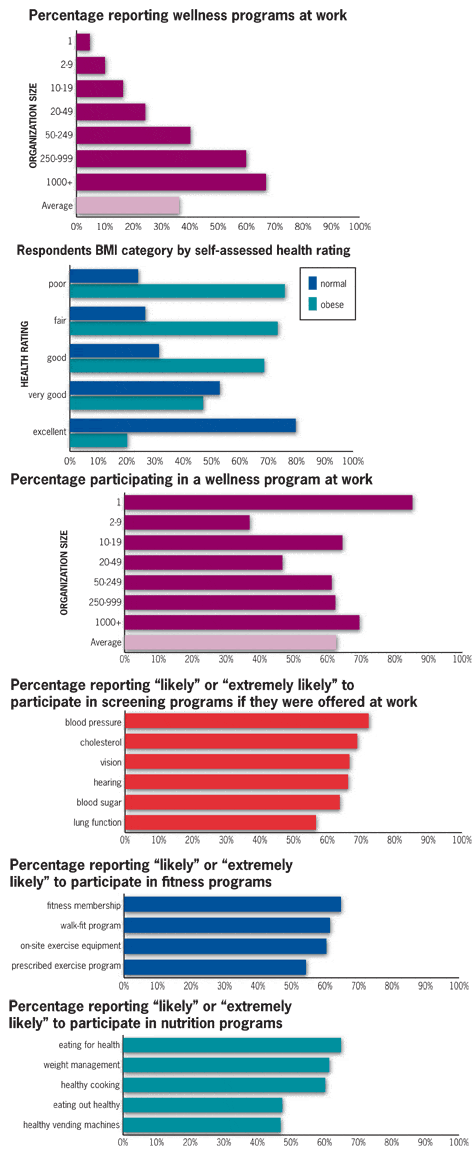‘Real Iowans’ spotlight health, wellness views

Most Iowans realize that good medical care and healthful behavior are important for maintaining their health. Despite that, many don’t take care of themselves as well as they should, according to a new statewide study released last week.
In the words of one focus group participant in the study, “I should do better and I try, but I tend to fall back. I try to exercise and follow my doctor’s advice. As a fallible human being, I know I fail.”
Reaching out to more Iowans through workplace wellness programs – particularly through the smaller businesses that employ the majority of working-age residents – will be a key strategy for improving health in the state, said Dr. James Merchant, director of the Healthier Workforce Center for Excellence at the University of Iowa College of Public Health, which led the research effort.
The study, “Iowans Speak Out on Their Health,” also found marked differences in the overall wellness and access to health care of those who are employed compared with those who are unemployed, and pointed to improving the health of the unemployed as a strategy to get them back into the work force.
The report’s findings, part of the center’s Real Iowans Research Initiative, were presented during the “Building a Healthier Workforce and a Healthier Iowa” conference held Nov. 30 at the Des Moines Marriott Downtown. Partners in the research effort with the Healthier Workforce Center were Des Moines-based consulting firm State Public Policy Group Inc. and David P. Lind and Associates LLC, an employee benefits consulting firm in Clive.
The comprehensive report, primarily funded by the National Institute for Occupational Safety and Health (NIOSH), is based on personal interviews, focus groups and telephone surveys involving more than 1,800 Iowans last summer asking about their health, health insurance coverage and views on wellness.
“It was stratified regionally so that we get reliable data from the most urban areas to the most rural,” Merchant said. “We were really looking to reach the population that includes over 1.5 million employed Iowans.”
Among the speakers at the event, which attracted 182 participants from health-care and business organizations from across Iowa, were Sen. Tom Harkin, Iowa Department of Public Health Director Tom Newton and Dr. Michael Parkinson, past president of the American College of Preventive Medicine.
Employee wellness “isn’t just a nice thing to do,” said Parkinson, a former Air Force colonel who led health policy and planning for the Office of the Surgeon General prior to advising corporations and health-care organizations on prevention and wellness programs. The Real Iowans research effort “absolutely speaks to the economic viability of the state,” he said.
“If you don’t have a healthy work force, you won’t have an economy that can grow,” Parkinson said. “If you look at that study, you’ll see that 70 percent of Iowans, much like the rest of the country, are either overweight or obese,” with the corresponding high health costs and lower productivity that come with that statistic. Parkinson recently worked with large employers in Cedar Rapids, including AEGON NV and Mercy Medical Center, to assist them in creating broader adoption of wellness programs in that community.
Additionally, the report found large disparities in the health and access to health care of the jobless compared with those who are employed. That finding illustrates the significant challenges in getting those people back to work, Parkinson said. “Many of these folks, unless they get in better shape, just aren’t employable,” he said. “That’s why employers ‘get it.’ Without healthy workers, they don’t have a business.”
Approximately 60 percent of workers in organizations that offer wellness programs utilize those benefits, the study found.
However, most Iowans, as well as most Americans, do not have access to wellness programs at work, said Paul Schulte, director of the Education and Information Division of NIOSH. “And it’s most pronounced when you get to smaller companies,” he said. “This has to be one of the target areas if we’re going to better promote wellness to employees.”
As the nation’s largest employers find continued success with wellness programs, more data are becoming available about their effectiveness, which is driving more employers to establish programs, Schulte said.
“We’re at an exciting point from a prevention perspective,” he said. “We are at a point where we realize we need to have a prevention-based approach, and we have to have a system that addresses all the factors that affect workers’ health.”
IBM Corp. found that ensuring regular visits by employees to a primary care physician reduced overall mortality from heart disease, stroke and cancer by more than 5 percent, Merchant noted. With that came lower hospitalization rates and lower total health-care costs. Between 2001 and 2007, the company documented more than $1 billion in health-care and related productivity savings from the employee health-care and wellness programs it instituted.
“Do you have to be IBM to be a smart employer? I think the answer to that is now generally understood to be no,” Merchant said. “Many small employers are now having success with some innovative programs.”
Harkin, who was unable to attend the seminar in person, said in a prerecorded video message that funding initiatives through the Patient Protection and Affordable Care Act should enable more businesses and communities to launch wellness programs.
“We have to do everything we can to build up and incentivize participation in workplace wellness programs,” he said. He noted that the new law also allows insurance companies to provide premium discounts of up to 30 percent to employers that offer wellness programs to their workers.
At the state level, Newton said, data from the Real Iowans research will be incorporated into public policy initiatives that are now being developed.
“This data is being introduced at a very opportune time, because we are in the process of drafting a statewide health assessment plan,” he said. “The data in this report will be compiled with other data as we begin to draft plans about how to address these issues.”
Rather than the 20-year plans the Iowa Department of Public Health has developed in the past, the department will look at a shorter five-year horizon in addressing wellness, Newton said.
“We’re going to focus our efforts and come up with five to 10 priorities for Iowa to work on over the next five years,” he said. “These priorities will be ones that we have the data that show we can move the ball on them.”










